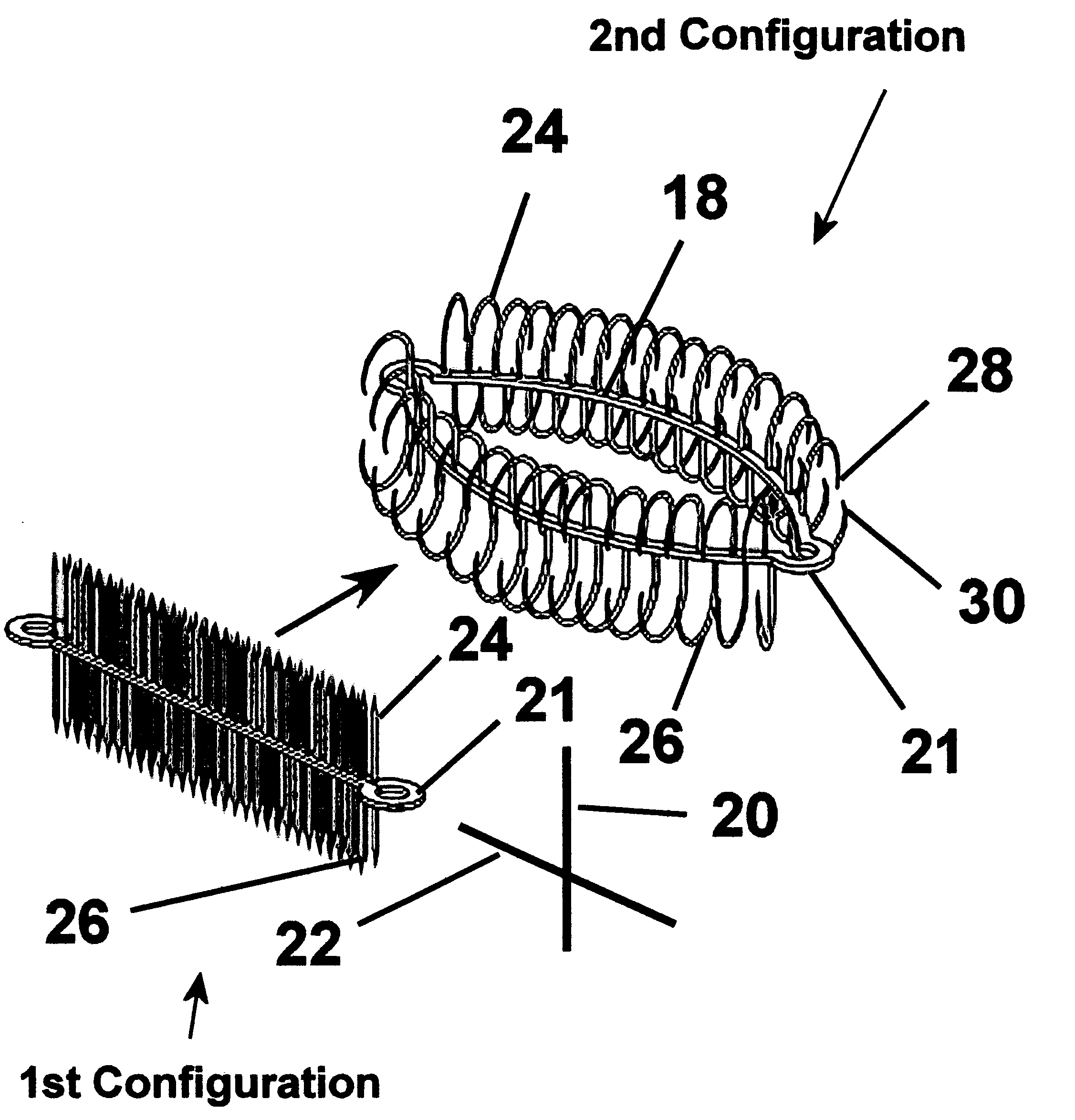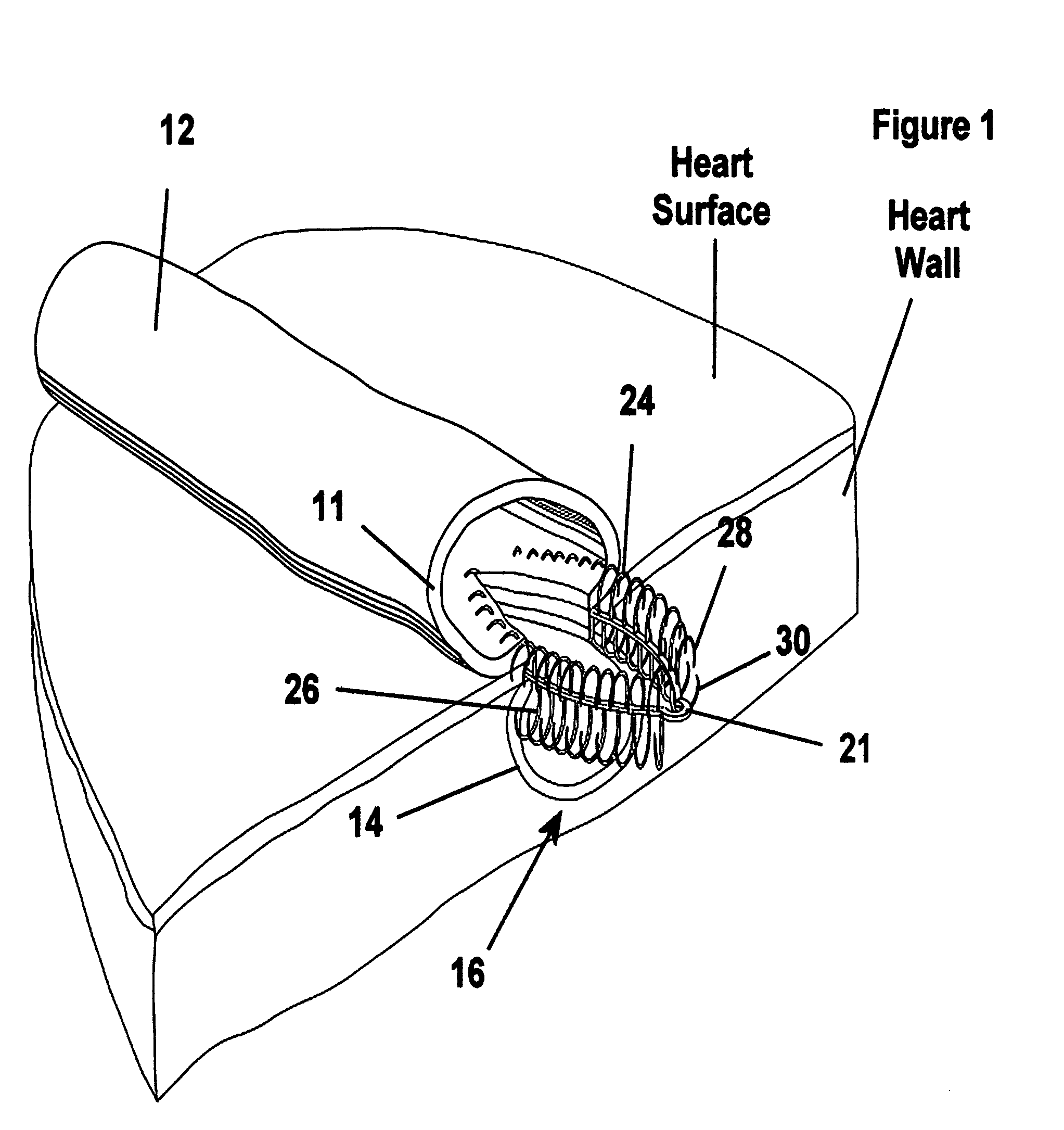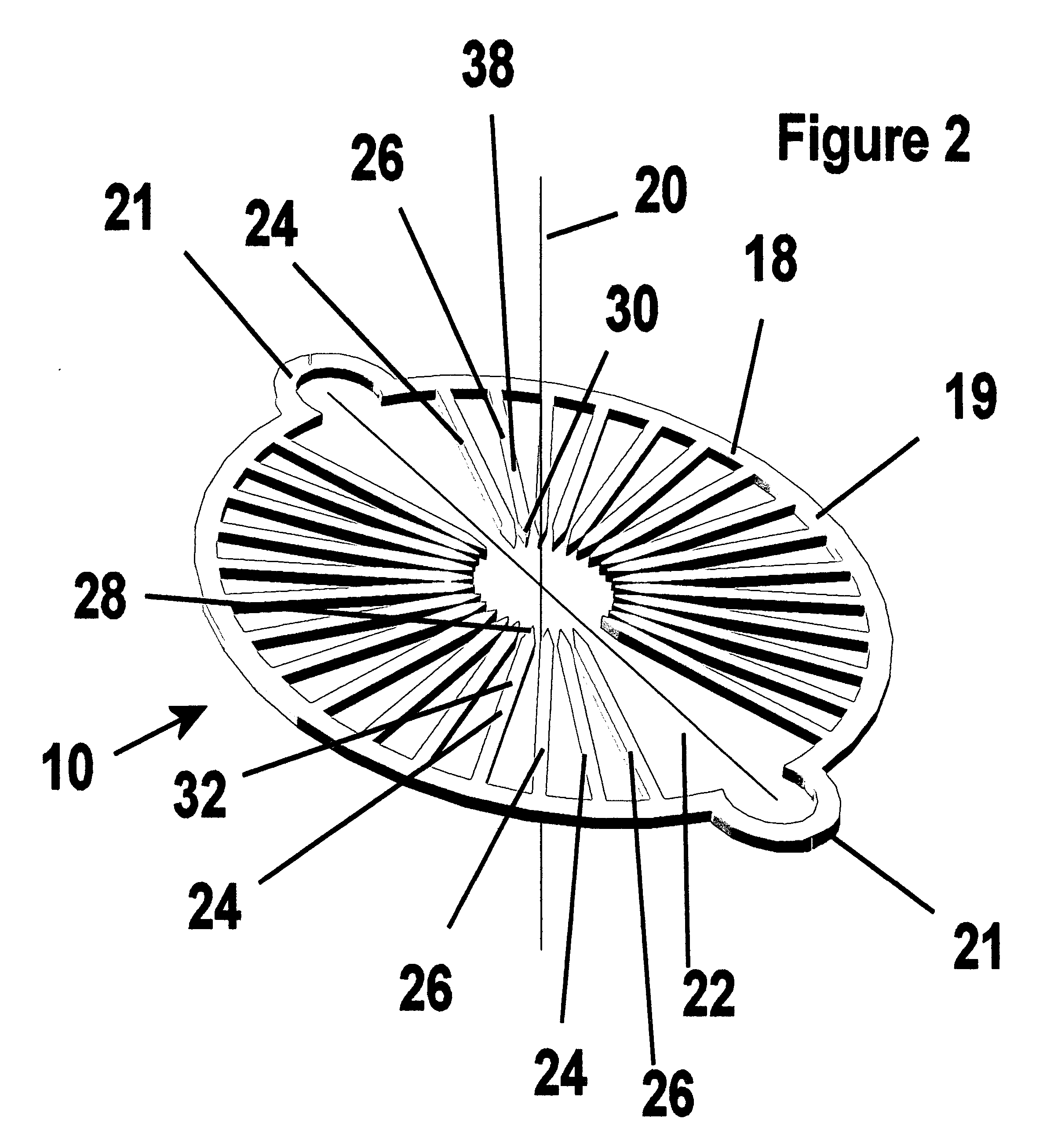Fastener apparatus for tissue and methods of deployment and manufacture
a technology of fastener apparatus and tissue, which is applied in the field of fastener apparatus for tissue and methods of deployment and manufacture, can solve the problems of affecting the patient's recovery, requiring a long time to complete the procedure, and he or she is more likely to experience complications, etc., and achieves the effects of quick and reliable, convenient and fast penetration of tissue, and simple design
- Summary
- Abstract
- Description
- Claims
- Application Information
AI Technical Summary
Benefits of technology
Problems solved by technology
Method used
Image
Examples
Embodiment Construction
[0056] Referring to FIG. 1, an apparatus, referred to hereafter as a fastener 10, is shown making a generally tangential anastomosis between two pieces of tissue, represented here as a wall 11 of a generally tubular duct 12, for example and without limitation, a graft of an artery or vein, and a wall 14 of a vessel 16, for example and without limitation, a wall forming a coronary artery. The anastomosis established by the fastener 10 provides a sutureless connection between a wall 11 of the tubular duct 12 and the wall 14 of a vessel 16, thereby facilitating making a tangential connection between the duct 12 and the vessel 16. Desirably, the fastener 10 biases the tubular duct 12 and the wall 14 of the vessel 16 toward one another, thereby establishing a leakproof attachment between the tubular duct 12 and the vessel 16. Additionally, the continual bias imparted by the fastener 10 between the tubular duct 12 and the wall 14 of the vessel 16 facilitates the formation of a biological ...
PUM
 Login to View More
Login to View More Abstract
Description
Claims
Application Information
 Login to View More
Login to View More - R&D
- Intellectual Property
- Life Sciences
- Materials
- Tech Scout
- Unparalleled Data Quality
- Higher Quality Content
- 60% Fewer Hallucinations
Browse by: Latest US Patents, China's latest patents, Technical Efficacy Thesaurus, Application Domain, Technology Topic, Popular Technical Reports.
© 2025 PatSnap. All rights reserved.Legal|Privacy policy|Modern Slavery Act Transparency Statement|Sitemap|About US| Contact US: help@patsnap.com



